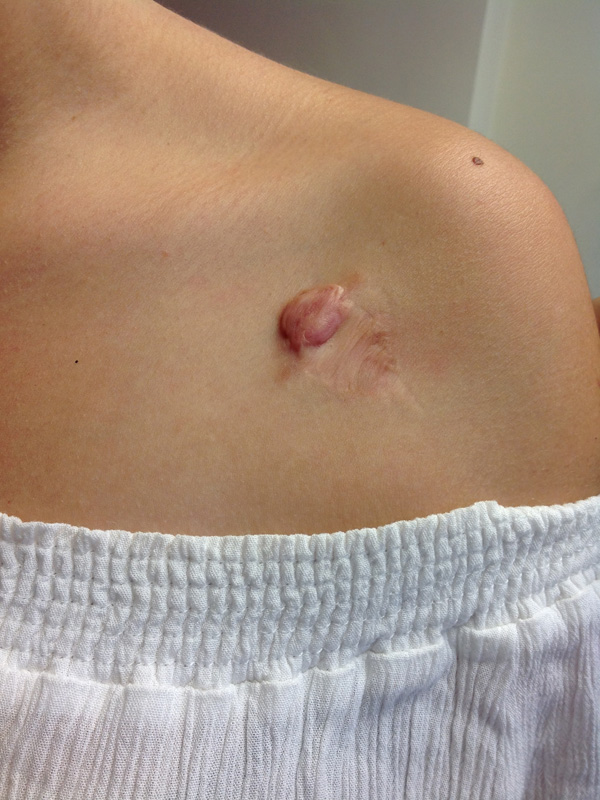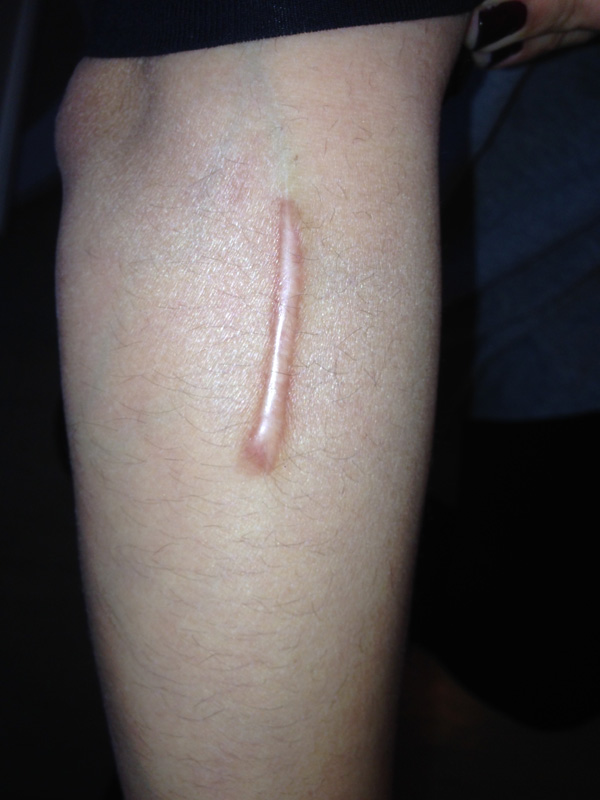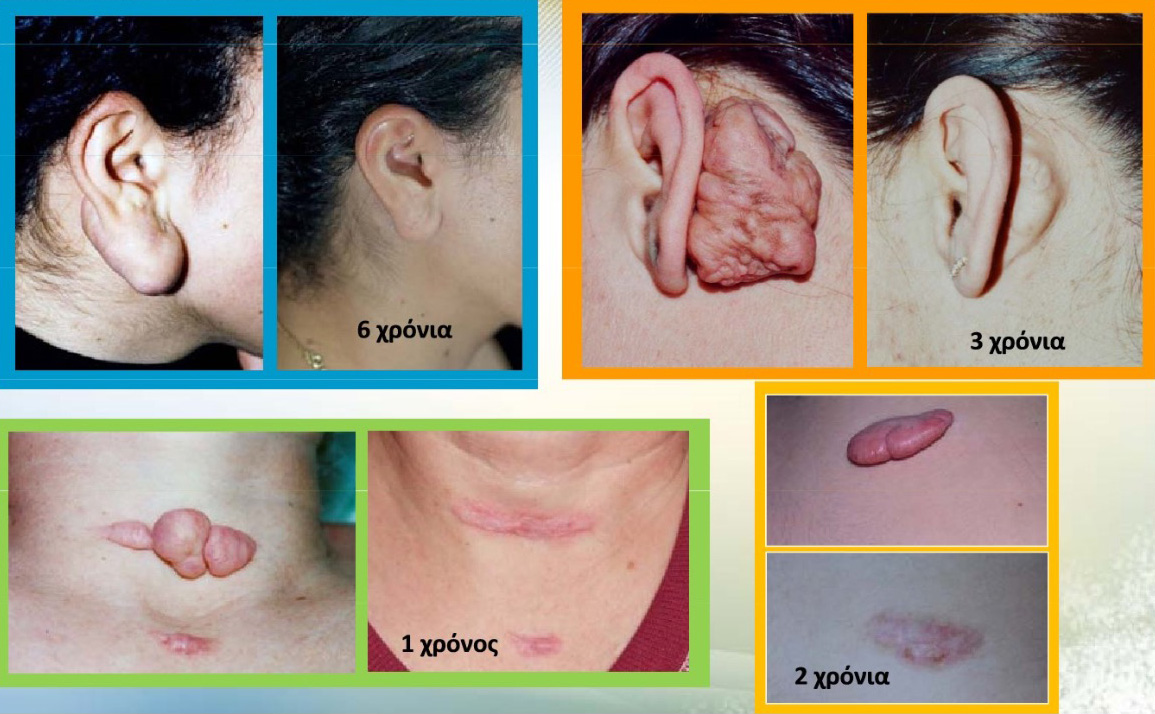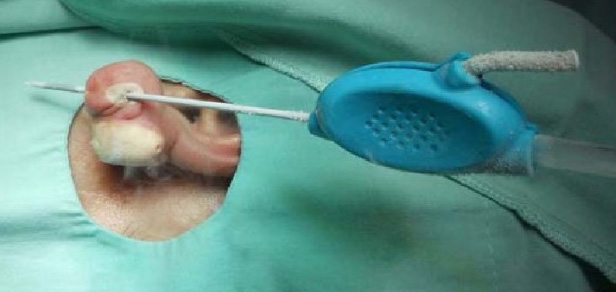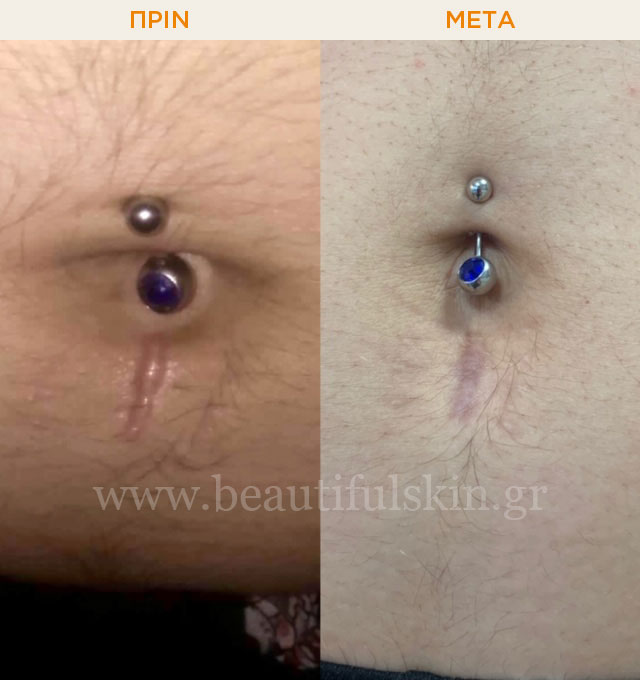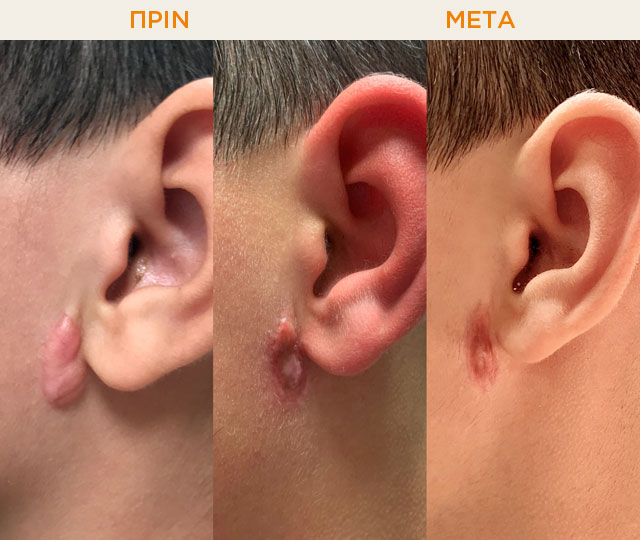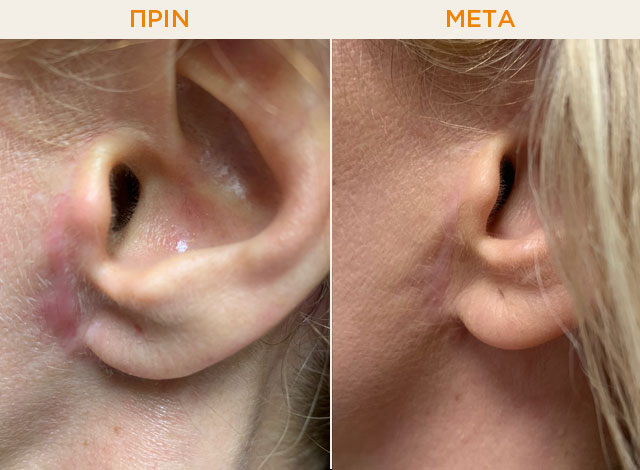They are deformed thickened scars in sites where there has been trauma (e.g. a surgical incision), after a burn but also after severe acne or on vaccinations sites or even after piercing of the earlobes.
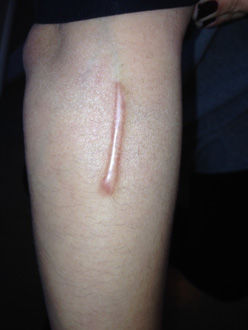 They are more common in women than in men and their appearance begins as a pink-colored raised scar within a month of the injury. In the following months it takes the form of a hard shiny and smooth plaque that often has an indurated surface. This is precisely the difference between keloids and hypertrophic scars.
They are more common in women than in men and their appearance begins as a pink-colored raised scar within a month of the injury. In the following months it takes the form of a hard shiny and smooth plaque that often has an indurated surface. This is precisely the difference between keloids and hypertrophic scars.
Keloids may develop on any part of the body and extend beyond the original wound margin (the area of injury) while hypertrophic scars are limited to the area of damaged skin.
Their origin is unknown, but there may be a hereditary predisposition. Local factors such as poor closure of wound margins or local traction of these margins due to underlying muscle action may predispose to hypertrophic scars/keloids.
The most common areas where keloids appear are the upper back and chest, shoulders, jaw, shins, calves and earlobes. They mainly appear in young people and teenagers while they are rare in the elderly and very young children.
Many times they are accompanied by pain, itching or a burning sensation especially during the growth phase.
They are a skin condition with a strong psychological impact for the patient as they are treated very difficult and are not covered by make-up.
Their presence is often noted by other people and they distress the sufferer who is usually at a young age and his/her self-confidence is negatively affected.
Treatment
Keloids in contrary to hypertrophic scars recur after their surgical removal.
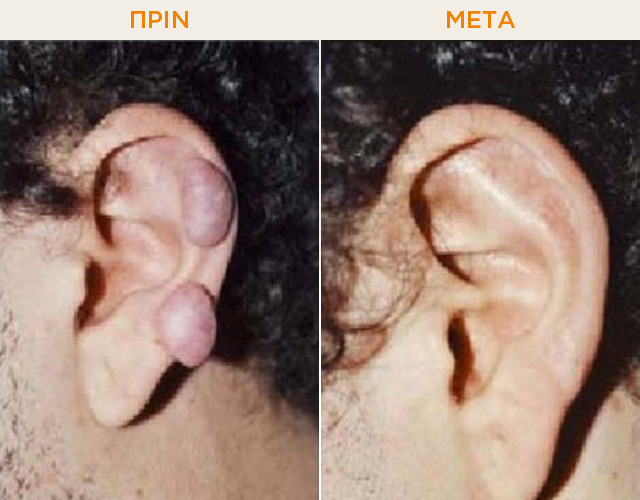
ΠΡΙΝ - ΜΕΤΑ: Χηλοειδές πριν και μετά τη θεραπεια.
The most usual methods of treating keloids are intralesional (on the keloid) cortisone injections that must be repeated every month until the keloid becomes flat. The number of treatments depends on the size of the keloid. Another indicated treatment is cryotherapy with liquid nitrogen.
Cryotherapy for relatively small keloids and hypertrophic scars is a fast and quite effective method that also requires monthly repetitions. It works by causing deep freezing on the tissue which gradually subsides.
In other words, we cause a cold burn, a local frostbite that leads to destruction of the keloid.
Other methods such as silicone sheets, pressure with special ligature, laser and retinoids are much less effective and they are applied only on small keloids.
What should I do to prevent keloid formation?
Usually people with a predisposition to keloid (hereditary factors play a significant role) - must avoid unnecessary injuries to the skin e.g. tattoos, piercings etc.
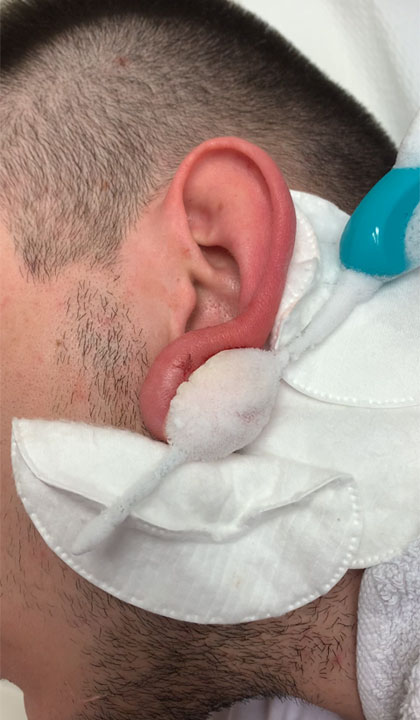
Θεραπεία μεγάλου χηλοειδους αυτιού
Also, young adolescents with cystic or inflammatory acne should receive effective treatment as soon as possible with oral retinoids if they have heredity for keloids or have already developed a keloid. Acne of this type can leave many and big keloids in predisposed young people, so parents should be careful by seeking effective treatment from a dermatologist.
If an injury is also caused, e.g. surgical incision, it is advisable to use silicone pressure sheets and then silicone creams for a long time. In the case of a keloid formation, then treatment is required because it does not recede (subside). On the contrary, hypertrophic scars may appear an improvement over time.
Keloids may develop for a long period of time (for several months), while a stable keloid can become active after months or even years. Usually patients realize that the size is increasing due to itching in the area.
If a keloid is formed, sun avoidance is advisable.
Who is most at risk for keloids formation?
Heredity (a specific gene is to blame in some types of keloids) while for hypertrophic scars there is no hereditary or racial correlation.
Keloids are more common in people of Asian or African descent and in people with dark complexion.
Young people from the age of adolescence and thereafter develop keloids more often than middle-aged and elderly people. Also, keloids appear more often in women during pregnancy (caesarean section).
Are keloids related to cancer?
No, there is no such correlation. So the area with a keloid is not more at risk of developing skin cancer than the rest of the patient’s body.
